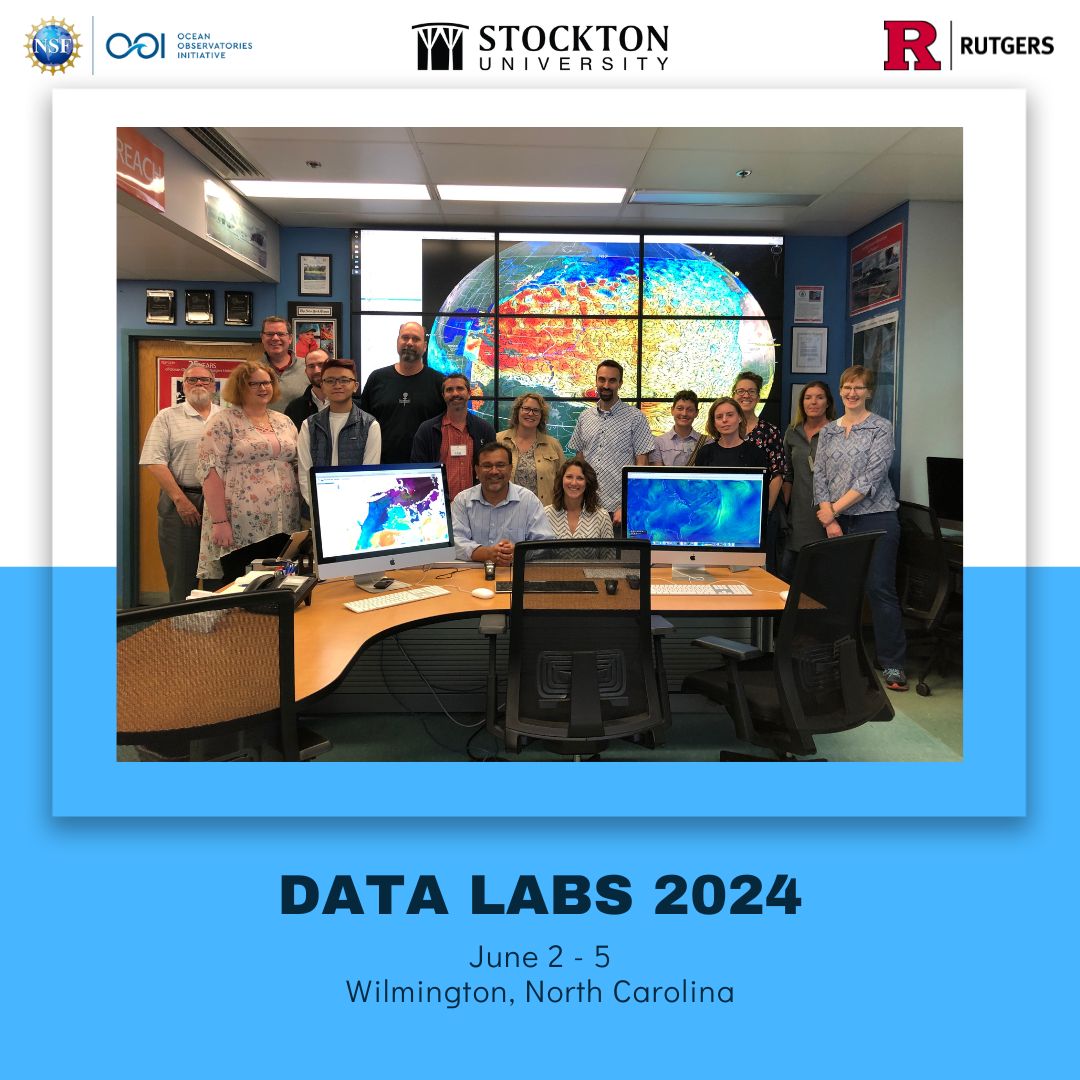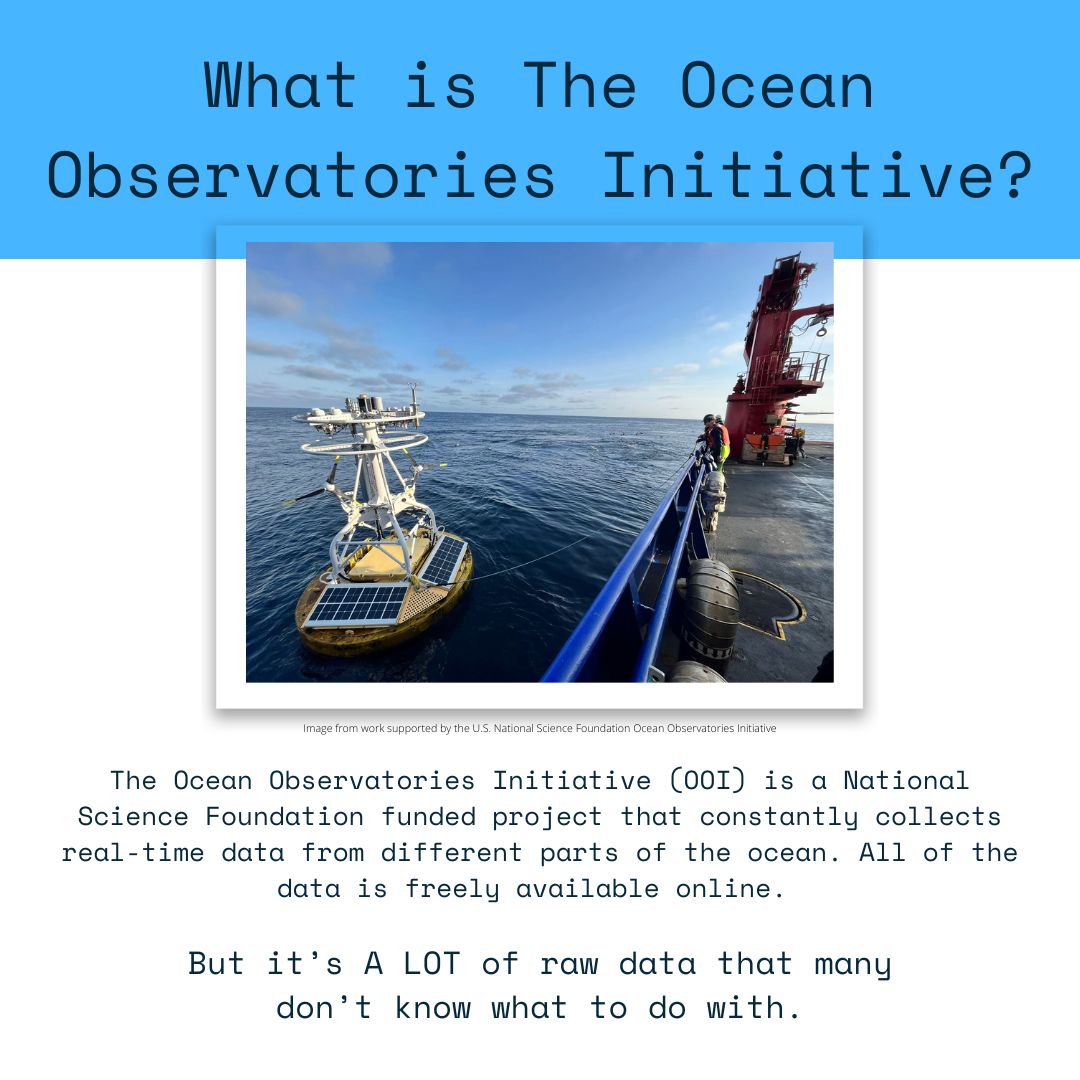Fall 2024 Issue
Get all the latest news on everything NAMS.
September 2023 - September 2024
Highlights

🎣⛵A Call to Saltwater Anglers from Stockton University
That’s something that the researchers at Stockton University are hoping to learn in an ongoing study directed at the recreational fishing community in New Jersey. Dr. Dana Christensen is an adjunct professor at Stockton University and Ocean County College who has given presentations to saltwater fishing clubs throughout the state, and her latest work through Stockton is geared towards angler satisfaction, or dissatisfaction, as the case may be.
“In conducting this study, we hope to explore the patterns and preferences of our anglers separately from law enforcement and regulators,” Dr. Christensen said, explaining how this brief voluntary survey will provide an opportunity for anglers to share their wants, needs, opinions and concerns directly with the research community.
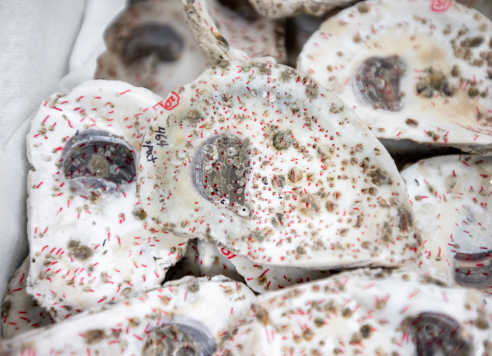
🦪 Shellfish Farmers Foster Oysters for Conservation
New Jersey shellfish farmers from Tuckerton to Mantoloking are getting paid to foster oysters for conservation alongside market oysters sold in seafood restaurants through a $961,227 award from the U.S. Department of Agriculture–Natural Resources Conservation Service’s Regional Conservation Partnership Program (RCPP).
The RCPP funds private and public partnerships for conservation; in this case, contributing to the restoration of rare and declining natural communities of oysters.
Kristin Adams ’17, who studied oysters as a graduate student, was awarded the grant to involve commercial growers in the restoration of the bay. The oysters that grow up on commercial leases will move to two restoration reefs monitored by the Stockton University Marine Field Station.
Adams is a conservation and aquaculture specialist for the Ocean County Soil Conservation District and a U.S. Department of Agriculture Natural Resources Conservation Service partner. She brought Stockton on board to help monitor changes in water quality and to sample marine life on and off the participating oyster leases with seine and gill nets.
Adams first studied biodiversity surrounding oyster farms in the Barnegat Bay as a Professional Science Master’s graduate student.
She sees bivalves as a beacon of hope for bringing back a healthy bay ecosystem with their ability to filter water and provide habitat.
📸 View more photos on flickr.
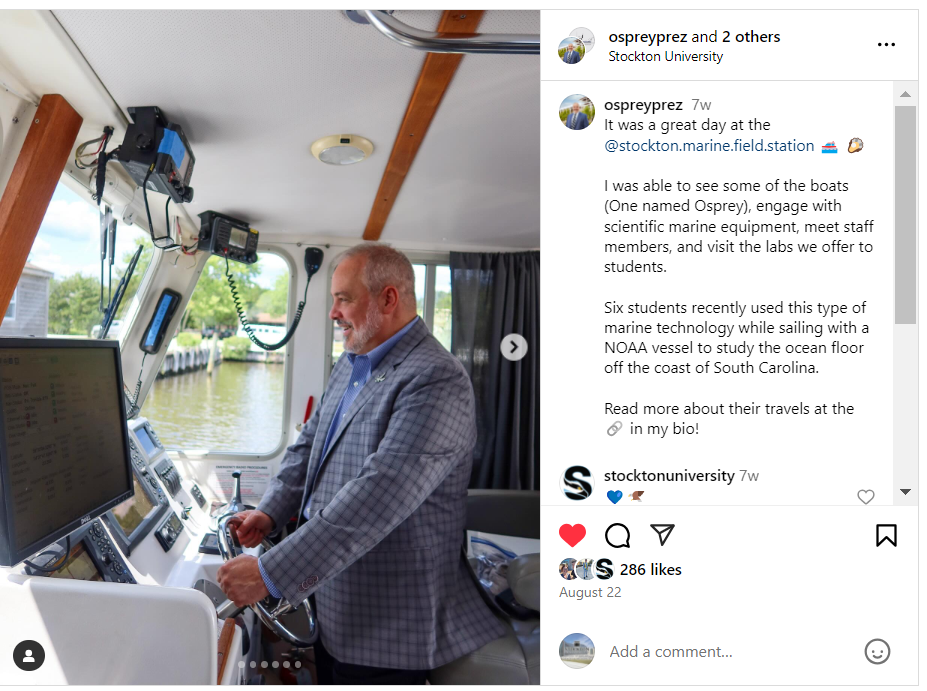
🦴 Paleoanthropologists Describe Ethipia Truly "Land of Origin"
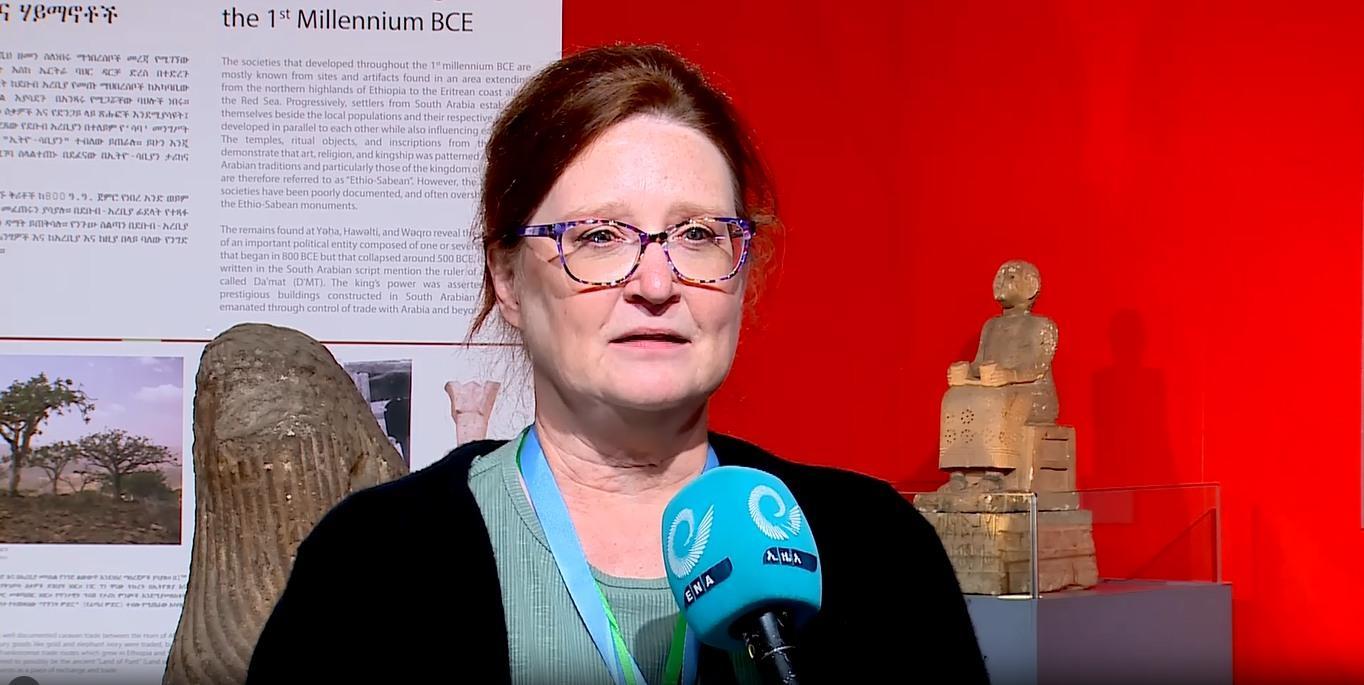
The name “Land of Origins’ appropriately describes Ethiopia said Paleoanthropologists who visited the country.
The 50th anniversary of the discovery of Lucy’s fossil is being commemorated with various events in Addis Ababa.
Over 240 researchers from 34 countries have visited Ethiopia as part of the event.
During their stay, the participants visited Adwa Memorial Museum and Unity Park and saw ancient artifacts and fossils in the country.
The visitors who spoke to ENA highlighted that Ethiopia’s name, “Land of Origin,” aptly describes the country due to its significance in human origins and its ancient history.
Professor Margaret Lewis, a researcher at the Department of Biology at Stockton University in the United States, mentioned about the researches that have conducted in Ethiopia, particularly in the Afar area since 1997.
She said Ethiopia is definitely the land of origins of so many things citing the contribution of Lucy’s discovery as it really changed our understanding of human evolution and origins of people.
🛥️ Students Study Ocean Depths on Inaugural NOAA Cruises
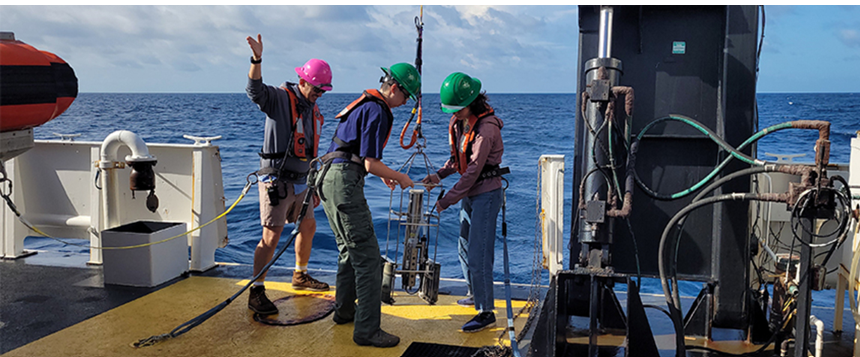
Lora Panepinto has always been comfortable on the water. The Stockton sophomore spends her summers teaching kids boat safety at the Liberty Nautical Education Center on the Rahway River.
“I’m pretty used to nasty weather and being on a boat,” said the Staten Island, New
York, native.
But nothing prepared her for spending a week 140 miles offshore, studying the ocean
floor 1,500 feet deep on a 186-foot research vessel.
“I don’t even think there’s enough words to explain it,” said the double major in Marine Science and Environmental Science. “It changes your view of what being on the water can look like. When you are out in the open water and you don’t see land, it kind of opens up your world a bit.”
Panepinto was one of six Stockton students who took part in a first-time series of cruises with the National Oceanic and Atmospheric Administration (NOAA) ship Nancy Foster in July. The students lived and worked with a NOAA crew as it mapped the ocean floor off the coast of South Carolina. Alanna Weeks, Mackenzie Briggs and Seth Sims sailed from July 5 to July 12, and Dustin Horensky, Hannah Elliott and Panepinto traveled from July 15 to July 21.
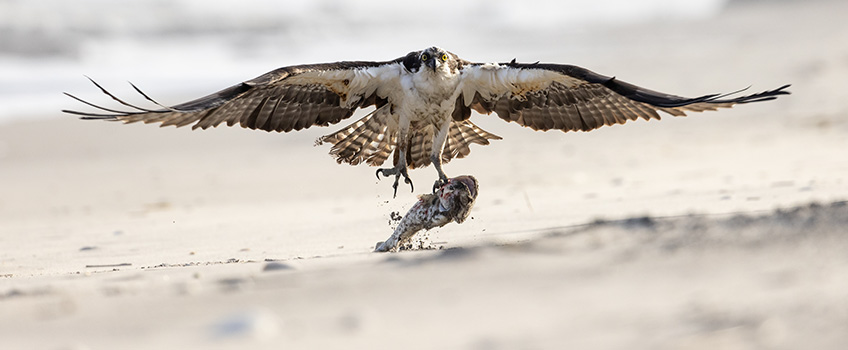
Conservation Efforts Help Our Osprey Mascot
When Stockton University chose the osprey as its official mascot in the early 1970s, the fish hawk was an endangered species with only 50 or so nesting pairs left in New Jersey. Bald eagles were down to one nesting pair that repeatedly failed to hatch eggs.
Now, five decades later, the effects of statewide conservation efforts have prompted the New Jersey Department of Environmental Protection to consider delisting the osprey and the bald eagle from the state's list of endangered species.
DDT, a pesticide used in agriculture, caused reproductive failure for both ospreys and bald eagles as well as other birds of prey.
"Being at the top of the food chain, DDT concentrated in their prey items and unfortunately one of the end results was thinning of the eggshells. The eggs would be laid, and if they did not break at the onset, usually a couple days into incubation, they would crack under the parents' weight," explained John Rokita '78, assistant supervisor of academic lab services and a Stockton Biology graduate.
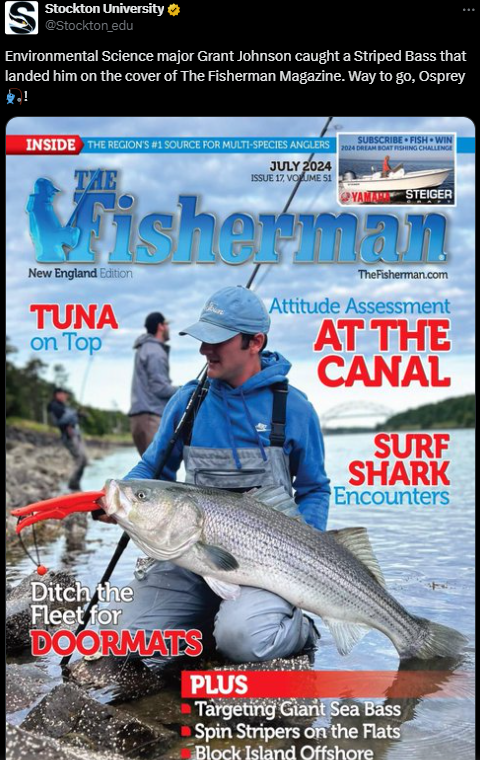
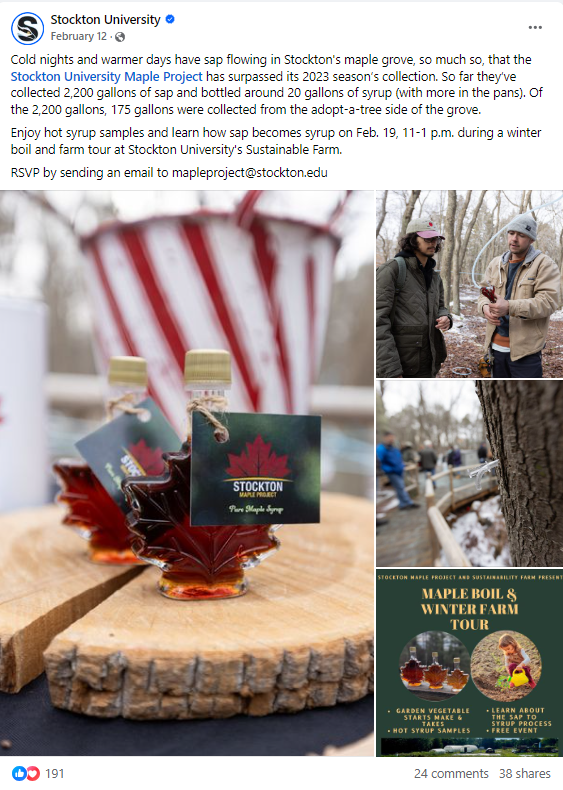
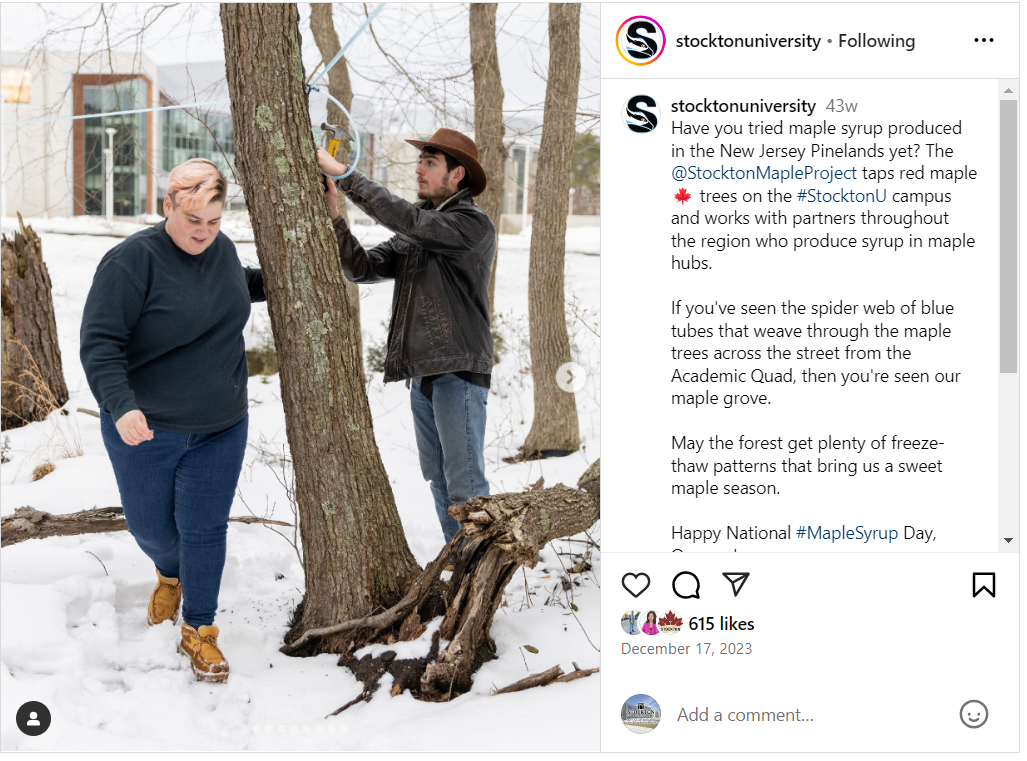
Picture Stockton... surveying the New Jersey coast 🏖️
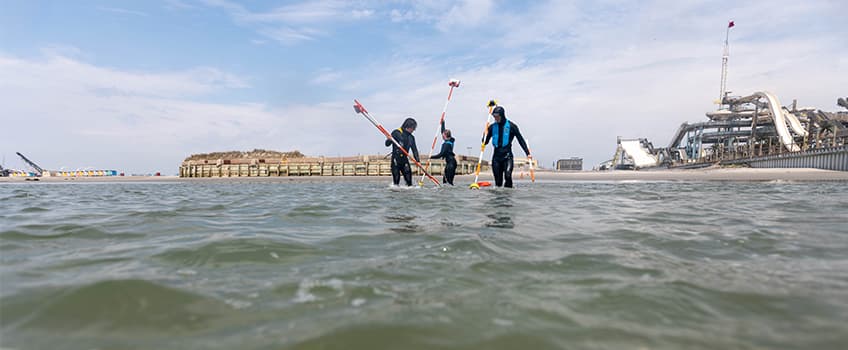
The Stockton Coastal Research Center (CRC) offers a job for students that takes them to 171 New Jersey beaches to swim, and they're hiring. Wetsuits and fins are provided.
Student workers dive in tohelp survey the state's coastline and collect data that determines the future of New Jersey's beaches.
Kimberly McKenna, interim executive director of the CRC, started as a student worker in 1984, two years before the New Jersey Beach Profile Network (NJBPN) was established to monitor the state's shoreline conditions. She has witnessed four decades of coastal processes and continues to document the evolving shoreline with the help of students and staff.
"(Initially), it was me, Stew (Farrell, the former director of the CRC) and Gus (Stew's dog). Back then we used the Emery method for beach profiling," she recalled.
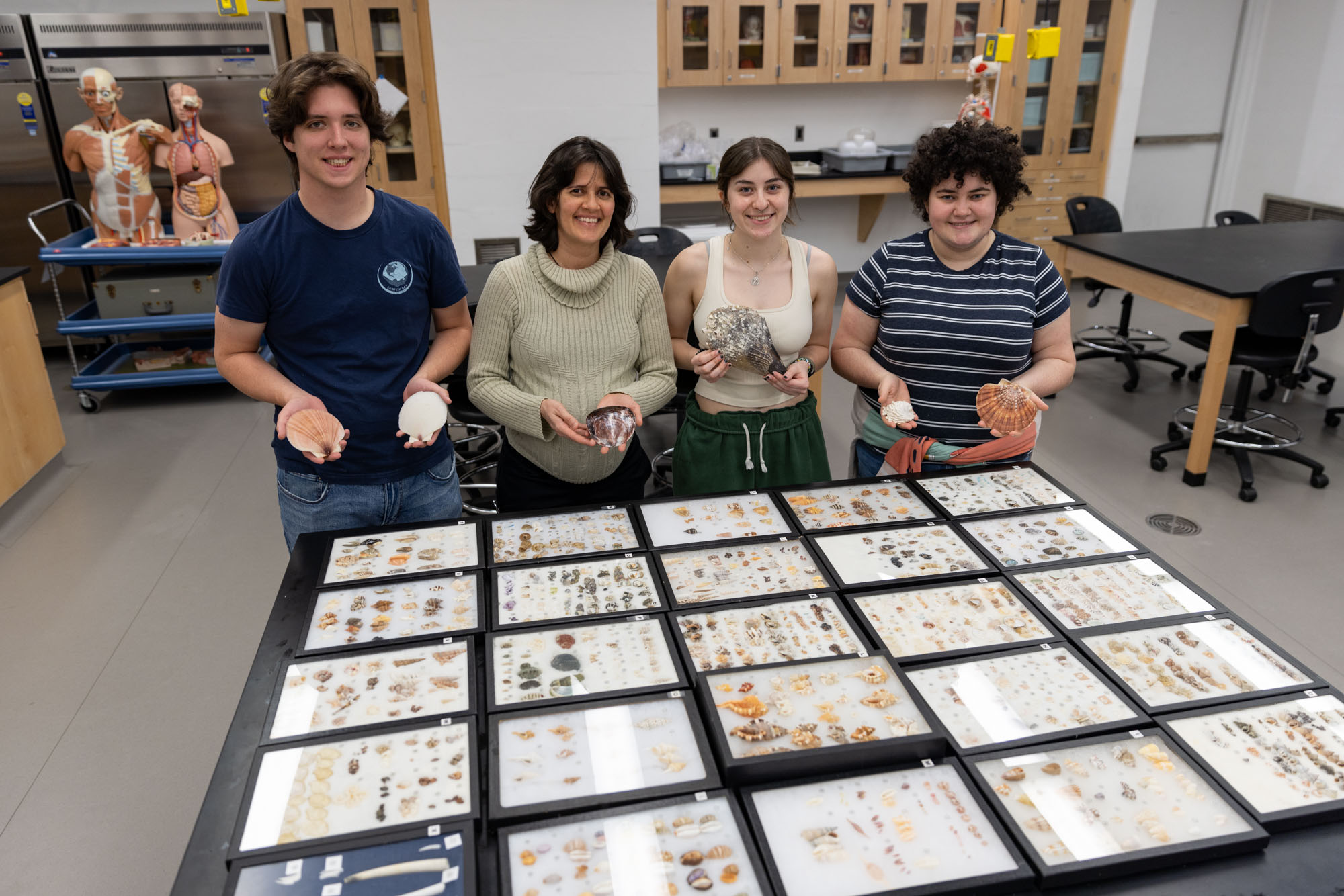
Picture Stockton … shellebrating marine invertebrates 🐚
B.J. Bingham collected shells for four decades, sharing them with local enthusiasts from her home exhibit in Vineland, but she wanted their impact to reach further. She chose Stockton as the new home for her collection, which gives students the opportunity to curate a campus display.
Bingham donated thousands of shells from around the world to the School of Natural Sciences and Mathematics where Camilla Alves Souto, assistant professor of Marine Science, has been organizing them with students. Many of the shells are from St. Croix, an island in the Caribbean, where she and her husband stayed at a remote field station for research.
Samantha Gransee, a Marine Science major from Lancaster, Pennsylvania, went to Bingham’s home to help move the collection to campus. “When you ask her about a shell, she can tell you when she found it, how she found it, and what it is. Her house was like a miniature museum,” she recalled
🐢Rescue Project Gives Terrapins New Life
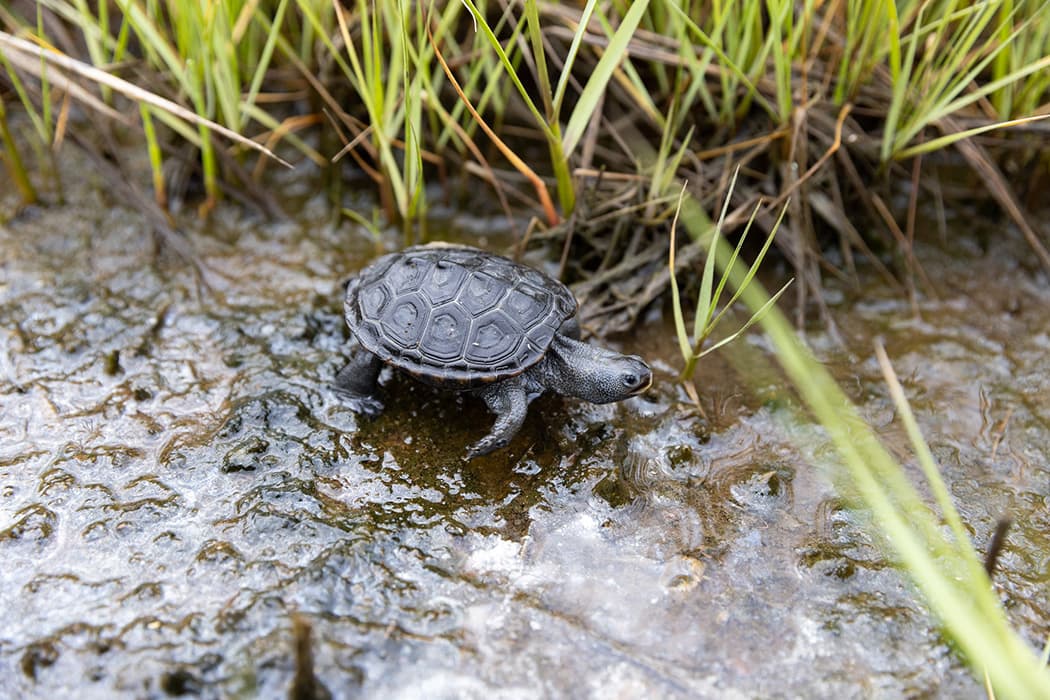
Reed Herr carefully stepped down into the marsh. The 6-year-old tightly grasped a 3-inch terrapin that hadbeen raisedin Stockton’s Animal Lab, and he eagerly awaited his chance to return it to the wild.
“Do you have a name for your turtle?” asked Lisa Ferguson, the Wetlands Institute’s director of Research and Conservation.
“Puddles!” Herr replied with a smile on his face.
He proudly wore a new T-shirt with the words “Save a terrapin today. SLOW DOWN” emblazoned on the back and a turtle “X-ING” sign on the front.
“Puddles is our first turtle to go back into the marsh!” Ferguson announced as Herr waved goodbye to the turtle he placed in the tall grass next to the institute.
Puddles was just one of hundreds of injured turtles collected annually by the institute and nurtured and rehabbed by Stockton students and staff as part of the Diamondback Terrapin Rescue Project. The project was started more than 30 years ago by Roger Wood, a former Stockton faculty member and a former research director at the Wetlands Institute.
📸 View more photos on Flickr. ▶️ Watch this video of the tiny terrapins' journeys. (A must!)
📰 In the News: nj.com, The Press of Atlantic City, Shore Local, Breaking AC
🚣🏽♀️Women’s Rowing Christens Dr. Stewart Farrell Shell
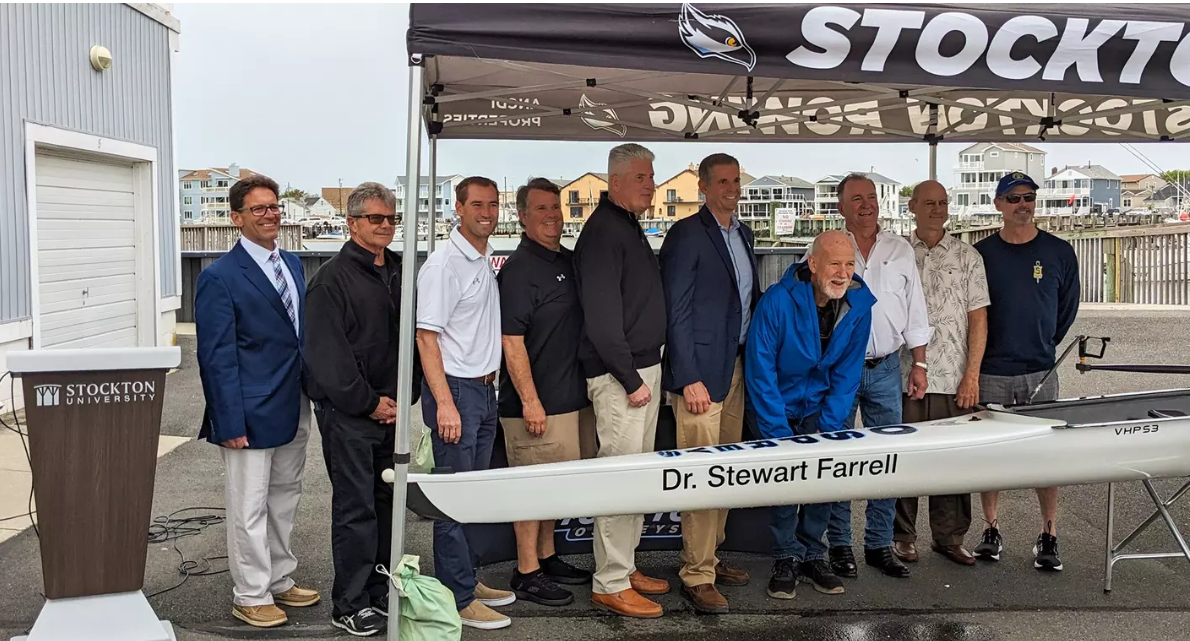
Stockton Women's Rowing held a ceremony at the Brigantine Beach Rowing Club on May 18 to christen the program's newest shell. The boat was named Dr. Stewart Farrell in recognition of the retired faculty member who helped found the Marine Science program in the early days of the University's existence.
The boat is a 2023 Vespoli VHP 8+ that is rowed by the Stockton women's varsity eight, which recently earned the bronze medal in the DIII V8 Grand Final at the famous Dad Vail Regatta, the largest collegiate regatta in the nation.
The donation to secure the boat was made by Jack Scheurich, a student of Dr. Farrell's at Stockton in the 1970's. Scheurich is the owner of The Cove Restaurant, a local eatery in Brigantine that has supported the Stockton rowing program and the Battle of Brigantine regatta for the past two years.
🍁🥞New Effort to Kickstart the Maple Syurp Industry in New Jersey
Faculty Members at Stockton University are using a million-dollar grant to kickstart the maple syrup industry in New Jersey.
This Jersey syrup will use Red Maple Trees, which has less sugar than the trees used in the Maple Syrup Capital of the U.S., Vermont.
University officials say they like their status as the underdogs.
“We’re also brining a whole new culture to South Jersey. We have people who have never tasted pure maple syrup coming to our events, people who didn’t know you get maple syrup from maple trees,” said Judith Vogel, director of the Maple Project at Stockton University.
Stockton University says it takes about 60 gallons of sap from red maple trees to make one gallon of syrup. They estimate that they can get 55 gallons of sap from around 400 trees this year
🌎🌊World Ocean Day - June 7, 2024
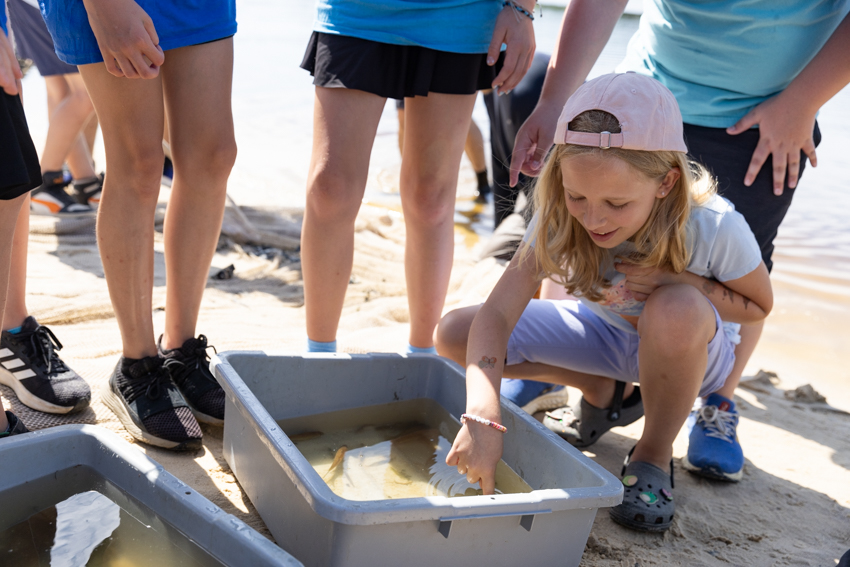
Stockton staff and faculty from the Marine Field Station, with the help of summer student researchers, provided a day of ocean-related activities to the entire school body (110 students grade K-8) to celebrate World Ocean Day. Port Republic teacher Kayleigh Friend initiated the concept and is the POC for the event, alongside Steve Evert of Stockton University’s Marine Field Station. The event will be a rain or shine effort with plan A scheduled as an all-outdoor event on the neighboring grounds and beaches of the Port Republic school.
🖥️ Stockton Offers Eight in-person, Online Classes for Lifelong Learners
The Stockton Institute of Lifelong Learning, which is part of the Stockton Center on Successful Aging, has announced its March and April programming that includes eight classes both in-person and online.
Here is a brief look at all eight classes, which met weekly for four weeks:
-
- Sylvia Plath & Intimate Partner Violenceby Professor Emily Van Duyne
- Streams, Swamps and Spungs, by Professor Emma Witt
- Chemistry Through Art, by Professor Sarah Gray, Fridays
- The Conversation Project: Discussions about Death & Dying by Professor Christine Ferri
- Contemporary American Short Story by Professor Kristin Jacobson
- Mediums & Mediumship: An Interdisciplinary Perspective by Professor Jennifer Lyke
- Women in the Holocaust: Rescuers and Resistersby Professor Patty Chappine
- Quilts: Storytellers of the United Statesby Professor Cynthia Arrieu-King
For more information email Gina Maguire at gina.maguire@stockton.edu or Christine Ferri at christine.ferri@stockton.edu or call 609-652-4311 and leave a message.
Welcome to Data Labs 2024 🎊
Stockton University works worked with Rutgers University on the OOI OCean Data Labs Project, developing and testing ways for undergrads and their professors to easily use all the raw data we get from (OOI).
Anna Pfeiffer-Herbert co-facilitated a four day workshop focusing on: Leanring about the OOI and the data it collects, exploring how to use OOI data in undergrad lesson plans, and creating an implementation plan for the classroom!
🍨Second Saturdays - Make Your Own Ice Cream' on May 11
Second Saturdays in Atlantic City are a series of family-friendly events hosted by Stockton University Alumni Relations. They are held on the second Saturday of every month at Stockton Atlantic City.
Joseph Trout, associate professor of Physics, make you want to say goodbye to Breyer’s and hello to homemade treats at this Second Saturdays session from 11 a.m.-1 p.m., Saturday, May 11, in the Fannie Lou Hamer Event Room at Stockton Atlantic City.
🦀 H.S. Students Get Hands-On Look at Marine Field Station's Work
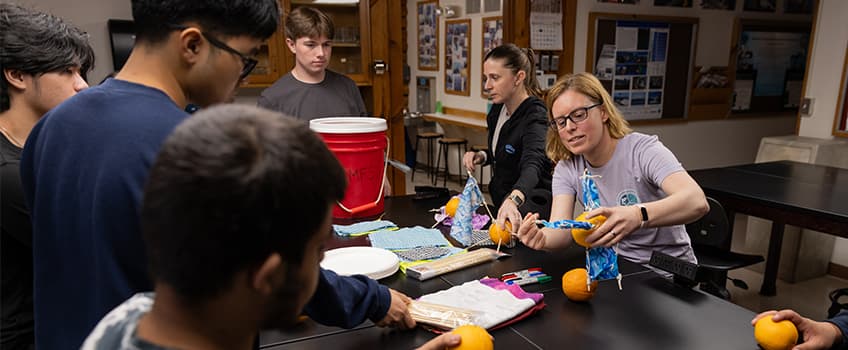
Denise Jenkins shrieked as one of her fellow Atlantic City High School students pulled the metal crab pot on board the boat.
The Atlantic City native didn’t expect the trap to be filled with blue crabs. The first cage the Stockton University professors removed from Nacote Creek on a recent rainy and gloomy day only had one of the crawly critters.
Jenkins was one of about 20 marine and environmental science students from two classes taught by Emily Loeb ’23 to take a tour of Stockton’s Marine Field Station on May 16.
The outreach is an educational component of three research studies by three Stockton professors. Students helped build water drifters with Anna Pfeiffer-Herbert, “flew” a new underwater remote operated vehicle (ROVs) with Peter Staub and used sonar to identify shipwrecks and marine debris with Stephen Nagiewicz and Mark Sullivan.
📸 View more photos on flickr.
Assistant Professor of Biology Lauren Seyler was live from the R/V Falkor Too, an ocean research vessel that traveled the coast of Chile in search of living fossils along the seafloor. This very special episode of Ask an Astrobiologist will dive into their incredible research, its connection to ocean worlds like Europa and Enceladus, climate change science, and a live tour of the research ship itself, including the ROV hangar, mission control, lab spaces, and the bridge. If you're interested in ocean exploration, ocean worlds in our solar system, and what it's like living and working on a research vessel, then you do not want to miss this episode!
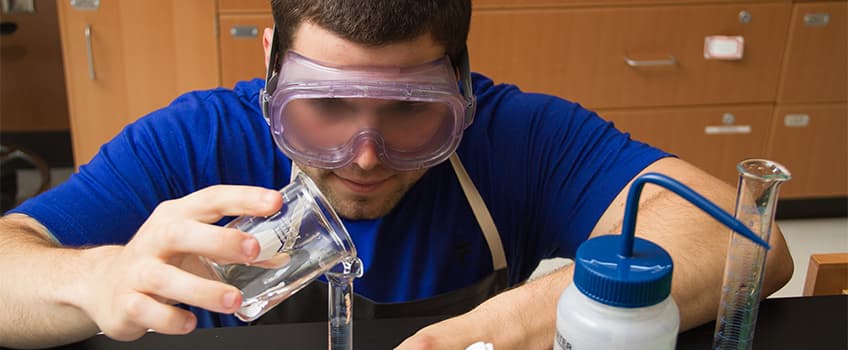
Biochemistry and Molecular Biology Program Recognized
Stockton’s Biochemistry and Molecular Biology Program (BCMB) has been recognized as one of the top programs in the country by a national scientific and educational organization.
The American Society for Biochemistry and Molecular Biology (ASBMB) recently awarded Stockton’s BCMB major with a full, seven-year accreditation — one of only two in New Jersey. Since 2013, the society has granted accreditation to only 101 programs nationwide, ranging from R1 research schools to liberal arts institutions like Stockton.
“We are proud of our program and thrilled to earn the full accreditation,” said Amanda Norvell, Stockton’s dean of the School of Natural Sciences and Mathematics. “Our program provides students with a hands-on education that focuses on experiential learning. BCMB students participate in original research, alongside faculty mentors, with opportunities to present their work at regional and national conferences.”
🌲🔥Intensifying Wildfire Seasons Ignite a Need to Train Forest Managers
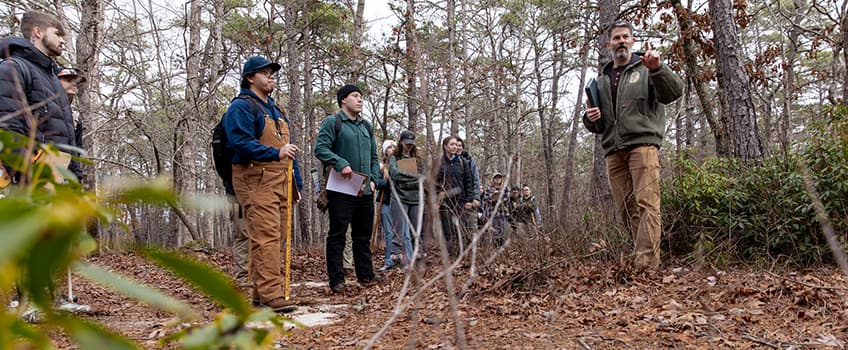
Morgan Kahn, a junior Environmental Science major from Hammonton, workedas a visitor services assistant at Wharton State Forest this summer when much of the East Coast experienced unhealthy air quality and hazy visibility from wildfire smoke that drifted from Canada.
The record-breaking wildlife season in Canada burned more than 44 million acres in 2023 with hundreds of fires exceeding 24,000 acres, which qualifies them as megafires.
Images captured from space showed smoke surging down the eastern United States and into Europe where it impacted people living thousands of miles from where lightning strikes ignited the flames.
“There were days where it was just too dry for people to light fires for barbecues. If people left fires going, it was our job to put them out, and that happened a lot,” Kahn recalled. Intensifying Wildfire Seasons Ignite a Need to Train Forest Managers
Morgan Kahn, a junior Environmental Science major from Hammonton, workedas a visitor services assistant at Wharton State Forest this summer when much of the East Coast experienced unhealthy air quality and hazy visibility from wildfire smoke that drifted from Canada.
The record-breaking wildlife season in Canada burned more than 44 million acres in 2023 with hundreds of fires exceeding 24,000 acres, which qualifies them as megafires.
Images captured from space showed smoke surging down the eastern United States and into Europe where it impacted people living thousands of miles from where lightning strikes ignited the flames.
“There were days where it was just too dry for people to light fires for barbecues. If people left fires going, it was our job to put them out, and that happened a lot,” Kahn recalled.
🐚 Picture Stockton... Exploring the Cape May Coastline
During fall migration, warblers, raptors and monarchs flying down the East Coast funnel through the Cape May peninsula. Jason Kelsey and students in his Coastal Ecosystems class followed a sliver of their migratory route to learn more about habitats and differences in natural and developed coastlines.
With Cape May on National Geographic's top 10 list of birding destinations in the world, students packed binoculars for the field trip.
The class, part of Stockton's Coastal Zone Management master's program, met at Higbee Beach wildlife management area to explore the natural bayshore and then took a short drive downtown to look at how beach engineering can reshape the coast.
📸 View more photos on Flickr.
Student, Faculty and Staff Dinner Brings Campus Together 🍽️
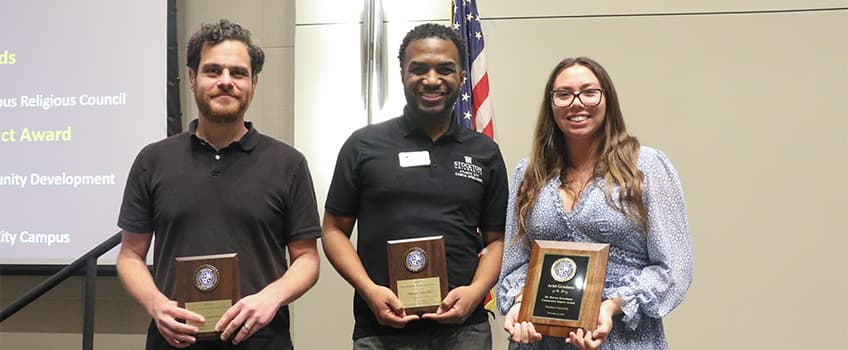
Laughter, companionship and good cheer were ever present in the Campus Center Event Room during the 39th annual Student, Faculty and Staff Dinner on Nov. 16.
Brian K. Jackson, chief operating officer for the Atlantic City campus and emcee for the evening, kicked off the program by encouraging the audience to remember the founders of the dinner, which included Yitzhak Sharon, distinguished professor of Physics, Vera King Farris, the former president of Stockton from 1983 to 2003, and Gail Rosenthal, the late director of the Sara and Sam Schoffer Holocaust Resource Center. According to Jackson, they created this dinner as a way for the campus community to engage with one another shortly before the holidays.
PHOTO: Steven Kalman, associate professor of Chemistry; Marques Johnson, associate dean of students; and student Ariel Graziano were awards recipients this year.
SPOTLIGHT ON: Patrick Hossay
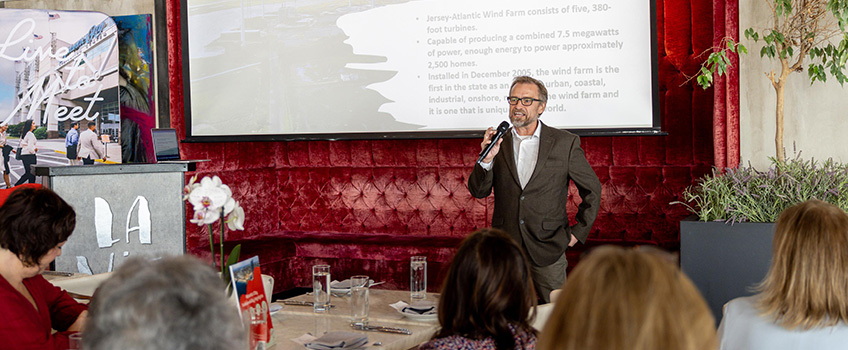
Patrick Hossay, professor of Sustainability at Stockton, has been part of the University community for 25 years and initially taught Political Science for 13 of those years. He and his colleagues formed the Sustainability Program about 12 years ago – one of the first such degree programs in the nation. He has been the chair of the program ever since.
His immense knowledge and passion for sustainability was at the forefront of a luncheon hosted by Visit Atlantic City, which he was asked to present in Washington, D.C, recently.
Hossay’s participation at the event came about when a group from Visit Atlantic City came to campus as part of an Office of Continuing Studies & Adult Education program.
“I met and spoke with them in my lab, and I guess they were impressed, as they later invited me to speak at this luncheon,” Hossay said.
During his presentation, Hossay wanted to provide a short overview of sustainability by engaging some of the misconceptions and facile notions that often define “sustainability” in the public mind.
Hemp Growing Class Tries to Dispel Stigma Of Cannabis
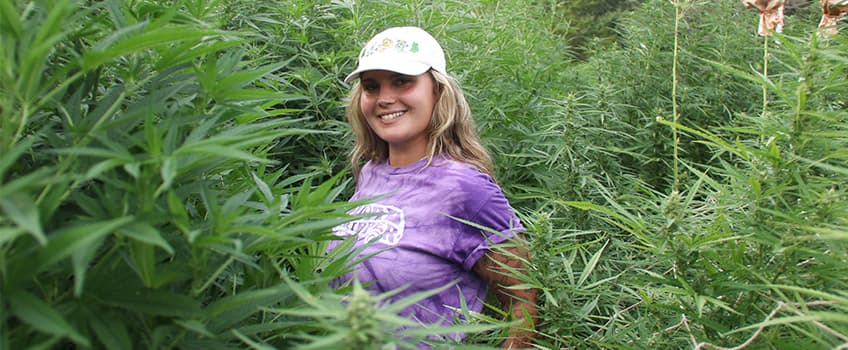
In the back of Stockton's 1.2-acre Sustainability Farm is a section some call “sin corner.”
Just a short distance from a row of 20-foot-tall hops vines and next to a line of tobacco plants is a 62-foot-long plot surrounded by a fence and a locked gate. Inside are about 150 cannabis hemp plants — believed to be the only ones grown outside by a New Jersey university.
“When it comes to universities, I would definitely say we stand out by doing what we are doing right now,” said Rob Mejia, a teaching specialist in Stockton’s Cannabis Studies program.
Hemp is a botanical class of cannabis sativa grown specifically for industrial or medicinal use. The plants have little to almost no THC — the major psychoactive component of cannabis.
It’s the second year Stockton has grown the plants as part of its Cannabis and Hemp Research Initiative (CHRIS), which was created in 2021 to conduct agricultural and nonmedical cannabis and hemp research. This fall is also the second time Valentina Fiero, a 2021 Stockton graduate with a degree in Science and Environmental Science, has taught a class in hemp cultivation
THROWBACK – Ten years ago today, we celebrated the ribbon-cutting of the Unified Science Center 1!
📷 Picture Stockton...Sciences Up Close

When the lights go off, chemistry experiments glow. At nearly 30,000mm, a telescope brings the details on the surface of the moon into focus. Fossils, cast replicas, rock samples, taxidermy specimens and pinned insects fill shelves and drawers with a museum of natural history that goes on display for classroom and lab presentations.
This photo series brings viewers macro and telephoto views of the sciences at Stockton.
The Paleontology, Geology, Entomology and Ornithology collections share stories from centuries ago, offer students the chance to explore how animals evolved, offer clues from the fossil record and put specimens into students' hands for close-up observationTrading Laps in the Pool for Labs at School 🏊🏽
Summer as we know it is usually reserved for vacations, trips to the beach, sitting by the pool and leisurely strolls on the Boardwalk. But for some undergraduate students in Stockton’s School of Natural Sciences & Mathematics (NAMS) and high school seniors in the Army Education Outreach Program (AEOP), summertime is the best time for research.
Thanks to Barry Pemberton, assistant professor of Chemistry, the 11 students got the opportunity to network and present their research to each other in the new Celebration of Summer Research presentation series on Thursday, Aug. 10.
According to Pemberton, the series’ purpose is to have students give an informal presentation to a wider audience, allow them to reflect on the progress they’ve made and give them the chance to see what other students are doing on and off campus over the summer
📢 GONE VIRAL: Footage of 150+ hammerhead sharks captured aboard the Cape May Whale Watch and Research Center's American Star was watched 2.6 million times when this reel went viral during #SharkWeek. Thank you to Garrett Testut, a Marine Science junior, for sharing these scenes from his internship
Student Discusses Waterborne Diseases at National Conference 😷
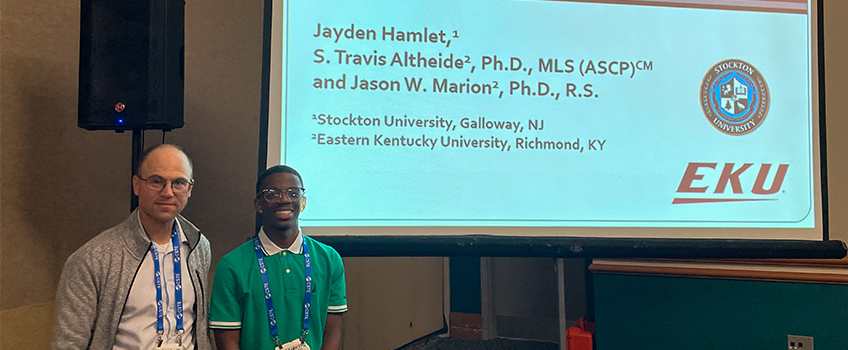
Environmental Science major Jayden Hamlet presented original research at a national conference in Salt Lake City in June.
Hamlet’s research centered on waterborne diseases, like E. coli, and the areas where it is concentrated. He took samples from urban, rural and forested areas and tested the samples to see if the E. coli bacteria was resistant or susceptible to antibiotics. After conducting his research, Hamlet concluded that urban areas had a higher E. coli concentration than others, demonstrating that cities are where water contamination happens the most
$500,00 Grant Will Equip Coastal Zone Management Program 🌊
As climate change makes storms stronger and sunny-day flooding more prevalent, educating the next generation of coastal zone managers becomes even more important.
Stockton created its graduate-level Coastal Zone Management program in 2020, and a $500,000 grant from the National Oceanic and Atmospheric Administration will provide new resources to enhance research opportunities, said Peter Straub, professor of Biology and Coastal Zone Management.
“Coastal resilience is very important now with climate change,” Straub said. “The biggest concern on the shore is flooding. Besides storm floods, we are now getting a large number of flooding days per year that have nothing to do with storms. They are just high tides that have been reaching up because sea level is rising.”

